Faculty Fellowships
Each year we sponsor the research of SUA faculty members whose work align with the mission of the PBRC.
Fellowships are awarded on a competitive basis, with a maximum allocation of $10,000 per award. The total amount available is $40,000 with the number of awards contingent upon the level of support provided to individual fellows. The fellowship program is designed to enhance and encourage research related to the Pacific Basin—individual and/or collaborative—and scholarly activities more broadly among SUA faculty. As part of the award, PBRC Faculty Fellows are expected to play active roles in PBRC activities and to present their research to the campus community.
Our Fellows 2025-2026
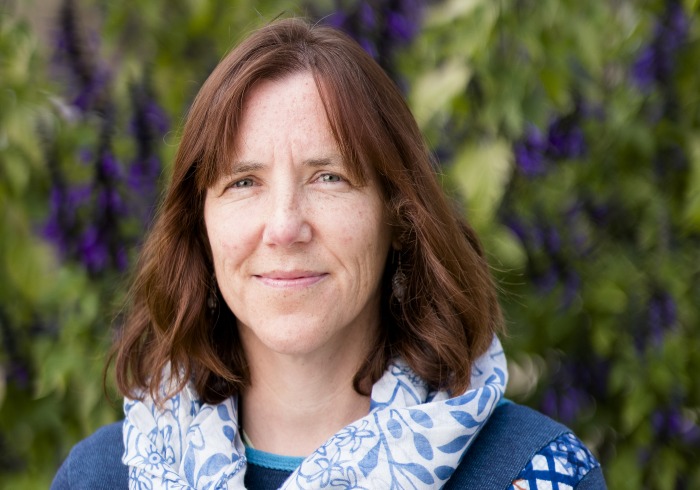
Monika Calef
"Effectiveness of Fire Suppression Efforts in Interior Alaska"The boreal forests of Interior Alaska evolved under a fire regime characterized by frequent, intense crown fires, particularly in black spruce stands. As wildfires increasingly threaten human lives and property, fuel reduction is considered a viable management solution. Fuel treatments usually include a combination of three steps: 1) removal of understory vegetation, 2) pruning of low tree branches to reduce ladder fuels, and 3) thinning mature trees to increase spacing and reduce crown fire potential. However, since fuel reduction is still relatively new in this ecosystem, its exact effectiveness on fires remains uncertain, while its impacts on the ecology of the forest seem detrimental as it can destabilize the underlying permafrost resulting in soil collapse and hydrological changes. The few fires that have burned through fuel removal projects so far combined with modeling efforts mostly show reduced fire intensity, but sometimes increased fire line speed (due to the drying of undergrowth). However, on very hot or very windy days, fuel removal seems to have no impact at all.
To address these knowledge gaps, our study uses Geographic Information Systems (ArcGIS Pro) to analyze how fuel removal impacts fire intensity and fire extent. Specifically, we are using geospatial fire progression data, Monitoring Trends in Burn Severity (MTBS) burn severity classifications, and fuel treatment project boundaries to quantify impacts on fire behavior. Additionally, we review daily fire reports to understand fire containment and suppression efforts during each wildfire. Finally, we apply a fuel hazard assessment tool we developed to understand changes in fire risk (via fuel buildup) near communities over time.
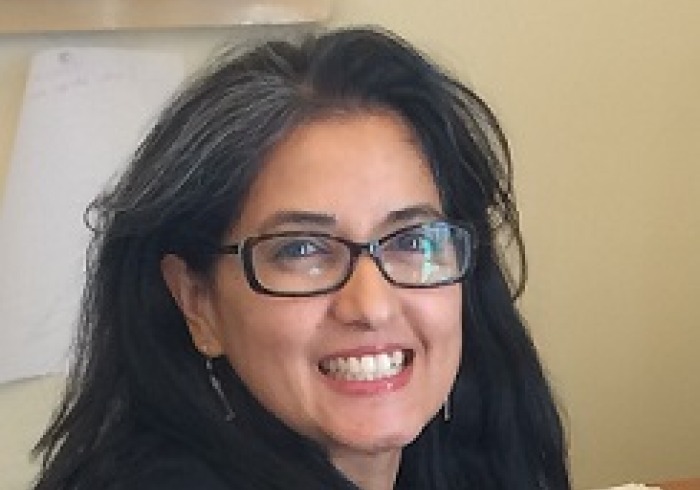
Diya Mazumder
"Estimate of Gasoline responsiveness to Retail Sales Price Changes in India’s Passenger transport Sector: Evidence from monthly household survey data"India ranks second after China in the Asia-Pacific region for its contributions in CO2 emissions from fossil fuels (International Energy Agency). Furthermore, India ranks as the world’s second most polluted country regarding local air quality pollutants such as fine particulate matter (PM2.5). Approximately 67% of 1.3 billion people in India live in areas that exceed the country’s own national air quality standard. Particulate pollution comes in the top 5 threats to human health globally. Road transport presently accounts for 12% of India’s energy-related CO2 emissions and contributes to 40% of PM2.5 in India’s major cities. Gasoline demand in India is expected to grow at an average rate of 6-7% in the 2026 fiscal year. Hence, reducing gasoline consumption from road transport must be an important part of India’s strategy to meet its global commitments of net-zero emissions goal by 2030, but also to significantly impact public health by improving local air quality.
The ability of a gasoline tax to be effective in reducing emissions and increasing energy security relies critically on how strongly gasoline consumption in India’s passenger transport sector responds to exogenous shifts in gasoline prices, a parameter commonly referred to as the gasoline price elasticity. Few credible estimates of the price elasticity of demand exist in the literature for developing countries. Our paper adds to the much - needed literature by using disaggregated data over the period July 2009 to June 2012 to estimate the responsiveness of gasoline use in the passenger transport sector in a fast-growing economy such as India. Our primary data uses monthly household level data on gasoline consumption for the years 2010 to 2012. We supplement this household data with state level data on gasoline prices that vary by month; district level demographic variables such as religion, education, median income, and population size. Finally, we also include state level demographic variables such as inflation, unemployment rate, percentage change in per-capita income, the Indian exchange rate versus the US dollar and the 1-year treasury bond yield derived from Indiastat.com. Our data has approximately 15,000 observations.
Our paper uses a strategy proposed by Kilian and Zhou, 2023 to causally estimate the price elasticity of demand. Kilian and Zhou find that global oil price changes pass-through to state level prices in the United States in varying degrees with some states being more responsive than others. This differential impact of world oil price changes on state level retail gasoline prices is largely driven by local cost differences in supplying gasoline. The local cost factors that play a similar role in the Indian gasoline market that involve transportation of crude oil to refiners, the reformulation of gasoline to satisfy environmental regulations, and the distribution of gasoline to city terminals and retail locations. The pass-through coefficient from the world crude oil price to the retail sales price will be our instrument for addressing the endogeneity of gasoline price in the estimation of price elasticity of demand.
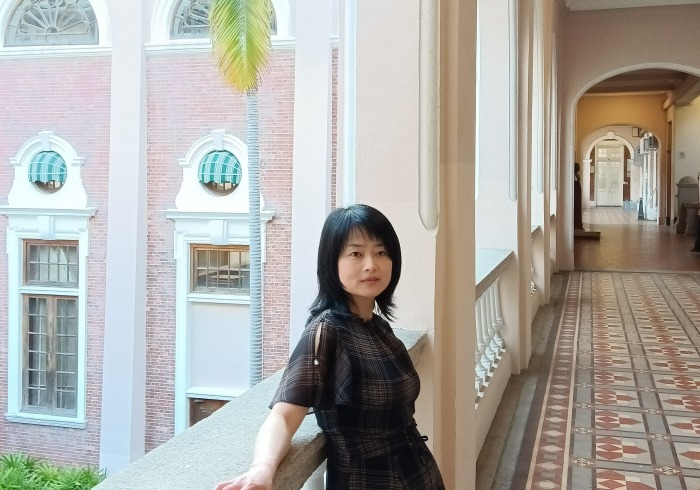
Sijia Yao
"Transpacific Nostalgia in Hong Kong Polular Music"The transposition of popular music from Japan to Hong Kong resulted from the marketing efforts of transnational corporations such as Polydor and Hong Kong’s longing for a new cultural expression of traditional, lyrical nostalgia, an inarticulate longing for the home and a golden age. This nostalgia was felt, not after the decline of Hong Kong, but in 1989, the last year of the Shōwa period of prosperity in Japan, and the zenith of Hong Kong’s independent existence. After the 1984 signing of the Sino-British Joint Declaration that set the transfer of Hong Kong to China in 1997, Hong Kong could look back at its quick rise as an economic center in the 1970s and 1980s yet also look forward toward the 1997 handover and the end of its city-state existence. This double view of its situation created the conditions for Hong Kong’s reception of Japanese love songs filled with loss and longing.
As women singers in modern times, Teresa Teng, Anita Mui, and Priscilla Chan all lament love in a heavily nostalgic way but in three different emotional structures: unrequited love, loss of youth, and impending separation. This project aims to examine the degree to which cultural mediators (lyric writers, producers, singers, audience), national traditions, and East Asian tragic aesthetics play a role in fostering the trans-Pacific movement of music in Japan, Hong Kong, Taiwan, and Asia in general.
Explore More
“Sun Illuminates Shanghai High-Rises” by Cerelia Maskarinec (2017)
Past Fellows
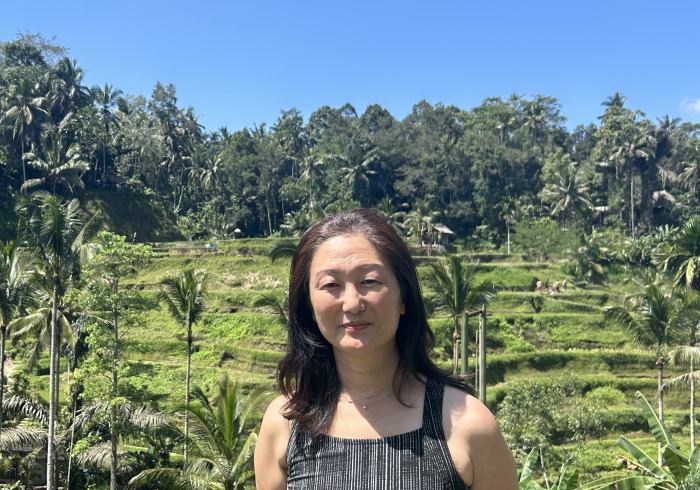
Esther Chang
"Healthy body image among young adults in Korea, Japan, China and the U.S.A."I am trained as a developmental psychologist with a focus on adolescence, a period when individuals transition from school to work and start assuming adult roles and responsibilities. My past research has centered on how families support their youth’s educational and career goals. Recently, however, I have become increasingly interested in how families influence young people’s dietary choices, health, and body weight management. As the PBRC Faculty Fellow, my goal is to expand and complete data collection across the Pacific Basin, including the USA (European and East Asian Americans), Korea, China, and Japan, to explore how cultural and parental contexts affect young women’s risk for eating disorders.
In August, I presented preliminary data at the XXVII International Congress of the International Association for Cross-Cultural Psychology in Bali, Indonesia. This research, conducted with colleagues including Dr. Jianmin Shao from the University of Colorado-Boulder, analyzed samples from the USA and Korea and revealed different approaches mothers are perceived to take in supporting their daughters’ weight management goals. These differences highlight challenges in intercultural communication regarding eating disorder prevention and body image. Additional data from Korea and other regions is needed to validate these findings. Fortunately, the presentation led to collaborations with scholars from Indonesia, New Zealand, and Mexico, who will help collect data in their countries.
I look forward to sharing the results of my analyses from the USA, Korea, and China with the SUA community this fall, and I hope to also include data from Japan, New Zealand, and Mexico before the end of my term as faculty fellow.
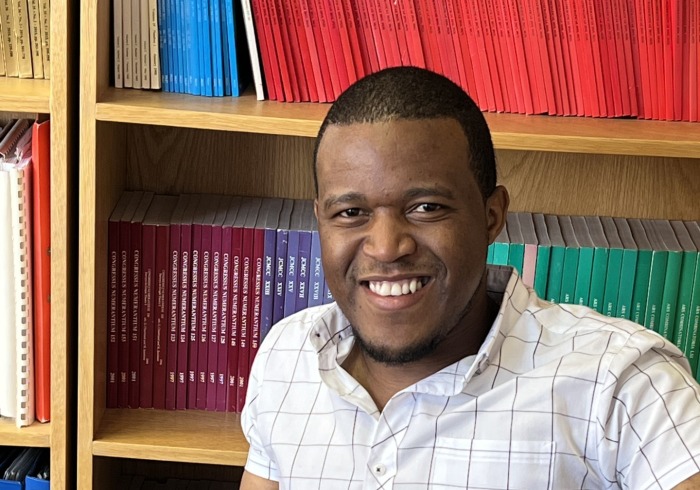
Sonwabile Mafunda
"Distances and Symmetries in Digraphs"Graph theory, a branch of mathematics, focuses on studying networks and their properties. Among these properties, symmetries, known as automorphisms, and distances between points within these networks have garnered significant interest due to their wide-ranging applications both within mathematics and beyond. While extensive research has been conducted on distances and symmetries in undirected networks, there remains a notable gap in the exploration of these concepts within directed networks, where links between nodes have specific directions.
This project, supported by the Pacific Basin Research Center fellowship, aims to address this gap by investigating the properties of distances and symmetries in directed graphs (digraphs). Our research seeks to contribute to the limited existing literature, opening new avenues for understanding these complex structures.
The study will particularly focus on two underexplored distance measures in digraphs: proximity and remoteness, which are crucial in determining optimal locations within a network. These distance-related questions are inherently more complex in directed graphs due to the directional constraints of the links.
Also, expanding on previous work with colleagues: Merzel, J. L.; Perry, K.E.; and Varvak, A. on breaking symmetries in networks, and in alignment with the mission of this center - the project of breaking symmetries in directed graphs seems befitting.
The project will strengthen collaboration with colleagues from various regions, including the Pacific Basin region, in particular the USA and China, and with other regions, including South Africa, and the UK.
The implications of this research are not limited to theoretical mathematics but extend to practical applications in fields like computer science, transportation, economics and more. For instance, understanding directed networks can provide insights into the dynamics of economic activities within the Pacific Basin region, shedding light on how benefits are distributed and why certain regions may gain more than others.
This fellowship provides a unique opportunity to advance the study of digraphs and their applications, contributing to a deeper understanding of both the mathematical and real-world systems they model.
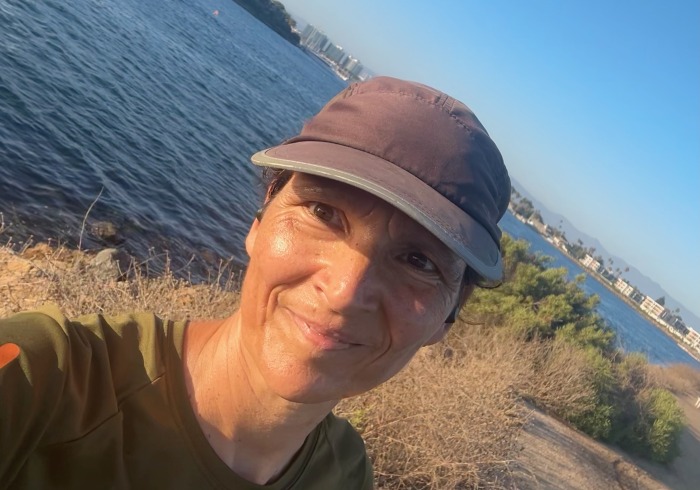
Deike Peters
"The Ballona Conservatory - A 'Listening Event' on LA's Last Wetland"In the spring of 2025, Soka environmental studies professor Deike Peters and her collaborator, the sound artist Daniel Rothman, will put on an interdisciplinary ‘listening event’ on the Ballona Wetlands Ecological Reserve and coastal conservation more generally. Ballona is all that remains of Los Angeles’ once abundant coastal wetlands. Today, Ballona appears as a degraded, ‘blasted’ coastal landscape just north of LAX airport. Before Europeans colonized the area, the area was called Waachnga by the Gabrielino-Tongva peoples. Mexican ranchos filled in large sections of it, grazed cattle on the land, and planted lima beans. The US Army Corps of Engineers put the Ballona Creek in a concrete straitjacket for flood protection in the 1930s. In the 1960s, the large Marina del Rey yacht harbor was carved into the wetlands and the dredged soil dumped on portions of what remained. Important historical burial sites of native tribe members were violated during the construction of the upscale planned community of Playa Vista that was built on the Northern portion of the wetlands from the early 2000s on. Now reduced to fewer than six hundred square acres, Ballona nevertheless still functions as a refuge for hundreds of species of resident and migrating birds. Its heterogeneous biodiversity is valuable although the damaged area remains in need of ecological re-enhancement. Nevertheless, some ecologists question whether the expensive, heavily engineered transformation into a full tidal wetland currently outlined in the official restoration master plan constitutes a desirable solution. Various native, naturalized, and non-native animals and plant species would obviously thrive very differently depending on the chosen path for restoration. So which nature is to be restored here?
The Ballona Conservatory acknowledges that ecological restoration always requires a parallel effort of re-story-ation and story-collection from many past and present actors and thus aims to initiate a wide-ranging conversation about the entanglements of human and non-human existences; about notions of ecological restoration, stewardship of natural habitats; and about the possible ways that nature and humanity might peacefully, sustainably, and creatively co-exist in the future. The event will also have practical, theoretical, and artistic relevance for advancing current thinking about the concepts of multispecies urbanism and multispecies justice. Formal panel presentations will be set alongside more creative inputs and an immersive listening event created by Daniel Rothman.
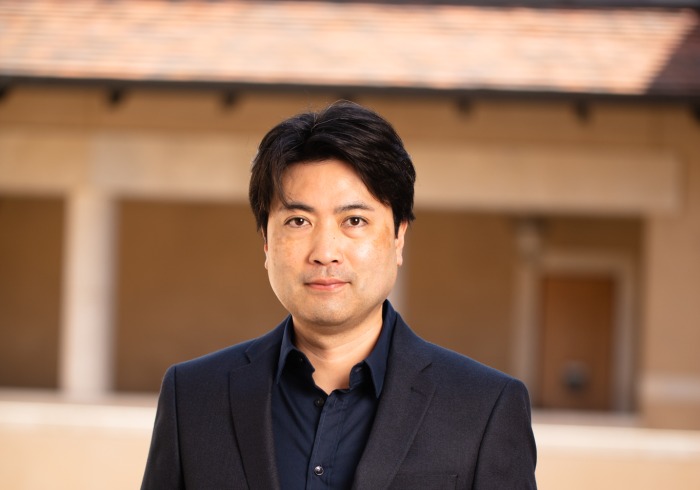
Osamu Ishiyama
"A Crosslinguistic Study of Honorifics"With the support of PBRC Fellowship, I am conducting a crosslinguistic study of honorifics. Honorific language is essentially a grammatical or morphosyntactic means of encoding social information such as respect and distance, and languages of the world differ significantly from one another in both quality and quantity of their honorific system. At one end of the spectrum there are languages like English which have virtually no grammaticalized or dedicated honorifics, while at the other end we find quite elaborate systems in languages like Javanese and Korean. There are numerous languages somewhere in between where honorifics are largely restricted to polite second person pronouns and verbal agreement, which is the case with many major languages of Europe such as Spanish.
My research involves a genealogically and geographically diverse group of languages, including (but not limited to) elaborate and relatively well-described systems of East and Southeast Asia (e.g. Japanese, Korean, Javanese, Madurese, Indonesian), avoidance languages of aboriginal Australia (e.g. Bunuba, Dyirbal, Guugu Yimidhirr), and some ‘isolated’ instances (e.g. varieties of Nahuatl in Mexico, Pohnpeian in Micronesia). Currently, I am investigating how predicate honorifics are expressed in various languages. My research shows that several transitivity-altering expressions are exploited for honorific purposes because of their syntactic and pragmatic functions. This includes constructions such as passives (Japanese, Indonesian), reflexives (Tetelcingo Nahuatl), intransitivization (Bunuba). Ultimately, these transitivity-lowering operations seem to be part of more general phenomena of agent-defocusing, which functions to avoid direct reference to (the action of) social superiors.
I presented initial findings from my research at Radboud University in Nijmegen, the Netherlands and am scheduled to deliver another talk at University of Heidelberg in Germany.
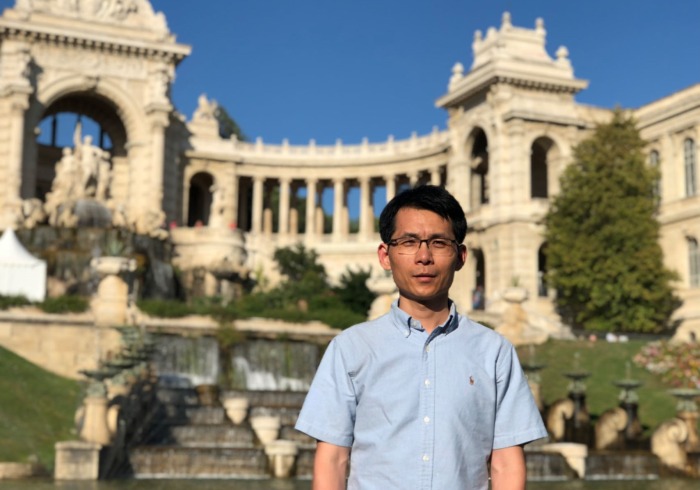
Junyi Liu
"Residential Housing Investment and Local Corruption: Evidence from the Chinese Housing Market"For many years, it has been widely believed that real estate investment in China is associated with corruption and other unethical practices, as perceived by the public. A 2018 survey conducted by the Chinese Academy of Social Sciences found that 55% of respondents identified corruption in the real estate market as a major problem, second only to housing affordability. In 2017, another survey by the Institute of Social Science Survey at Peking University reported that over 80% of respondents believed corruption in the real estate industry was a serious problem. However, there is still no confirmed link between local corruption and real estate investment in China due to the absence of empirical evidence at the prefecture city level. This lack of evidence is primarily due to the unavailability of a measure of local corruption at this level. As a result, public concerns about corruption in the housing market remain high.
The corruption-induced over-investment problem in the housing sector of world’s number two economy, China, is a major source of concern for the near future of the Chinese and the global economy. Amid the economic slow down due to COVID-19 pandemic as well as a rapidly aging population, over-investment in the residential housing sector in China is looming as one of the most urgent issues facing the Chinese economy. In this paper, we provide a theoretical and empirical analysis of the housing sector over-investment problem in China with a particular focus on the role of local corruption. Despite a large number of news reports in the Chinese media,highlighting close connections between corruption and residential housing investment, academic research on the topic remains thin. The same is true for other countries, both developed and developing, despite well-publicised reports by international organizations, including Transparency International, highlighting the construction sector as the most corrupt industry around the world (Transparency International, 2011;Shan et al., 2020).
Between 2009 and 2018, the real estate and construction industries played a crucial role in China’s economic success, constituting up to 29% of GDP in 2016 and generating over 15% of urban employment from 2013 to 2017 (Rogoff and Yang, 2021; Zhang et al., 2018). From 2003 to 2013, residential housing prices in China’s top-tier cities grew by an average of 13.1% annually, and real land prices in the 35 largest cities increased by approximately five-fold from 2004 to 2015 (Fang et al., 2015; Wu et al., 2016). The resulting higher prices contributed to the expansion of the construction industry. China added 100 billion square feet of floor space (Chivakul et al., 2015) and constructed 5.5 million apartments per year between 2003 and 2014 (Glaeser et al., 2017). In the first decade of the 21st century, the number of apartments built in China was equivalent to Japan’s total housing stock or twice that of the U.K. (Economist Intelligence Unit, 2011).

Anne Pearce
"Japanese Painting and Printmaking"I will travel to multiple locations in Japan to explore the myriad of materials and processes used in both historical and contemporary artistic practices, including visiting locations where paper and sumi inks are made. Visiting multiple museums and galleries to study and experience Japanese woodblock prints (ukiyo-e) and paintings on folding screens (byobu) from the Edo Period (1603-1867) will undoubtedly inform my next new body of artwork. My artistic practice centers on large scale water-based media, so my work shares many material aspects with the works in this celebrated era of Japanese art.
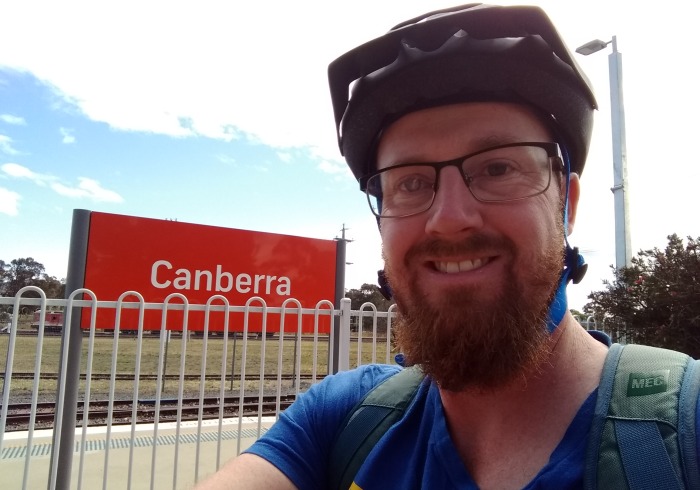
Shane Barter
"Partial Sovereignty: The Politics of Minority Self-Government"How can we best respond to minority regional demands for independence from the central government? When Quebecois, Catalonians, Moros, Tibetans, Chechens, or others seek separation to form their own state, what can be done? Some may support independence, but this is a form of partition, one that sometimes amplifies violence and dismisses dissenting voices, especially those of regional ethnic minorities. And independence is rare, as host states and a conservative Westphalian international order seek to preserve borders. However, continuing with the status quo, with ethnic majorities responding to distinctive minorities with exclusion, violence, and assimilation, is unjust as well as unsustainable.
Territorial autonomy—special forms of self-government for territorially concentrated minority nations—represents a way forward. A compromise between independence and incorporation, territorial autonomy provides minority groups with self-governance within the borders of host states. Autonomy is a go-to response to separatist conflict and an integral tool for minority rights. It is found throughout world regions and is growing. It can empower minorities through control over education and language rights, taxation and fiscal power, law and policing, political systems and governments, and foreign affairs. This said, territorial autonomy is underappreciated and poorly understood. With the support of the Pacific Basin Research Center, my project seeks to analyze the politics of minority self-governance. It seeks to move beyond existing studies of autonomy in Western democracies, appreciating a broader universe of cases. Along with democratic autonomy, I look to forms of post-conflict, Indigenous, nested, and authoritarian autonomy. My project analyzes several underappreciated puzzles. Despite being a form of decentralization, most autonomous regions are centralized. Despite being a tool of conflict resolution and multiculturalism, autonomy sometimes sparks localized conflicts and threatens smaller, second-order minorities.
Creating better, more inclusive forms of self-governance has the potential to help national minorities protect and develop their communities. This said, autonomous governance can also be improved. Authoritarian governments sometimes use territorial autonomy to dominate minority regions. Autonomous governments need to better respect second-order, regional minorities, including migrant and Indigenous groups, as well as gender minorities. However, autonomy also holds considerable potential. It could help to manage conflicts in Patani, Palestine, Donbas, Kashmir, and Kurdistan. Territorial autonomy may help to rewrite Indigenous governance, providing real power over communal land and resources. And it may help to better represent distinctive regions such as Okinawa, Corsica, Hawai’i, Puerto Rico, and more. At its heart, autonomy enables national minorities to see themselves as regional majorities, providing recognition alongside political empowerment. Crafting more and better minority self-governance has the potential to make for a more peaceful, respectful world.
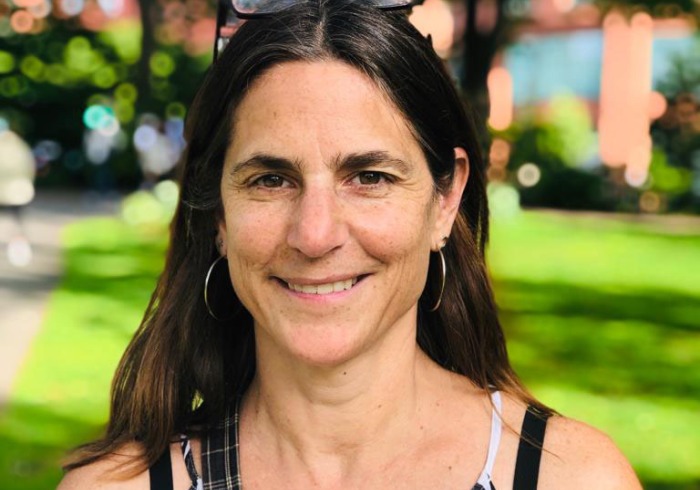
Sarah England
"Finding Refuge from Racism and State Violence, or just More of the Same? The Impact of Obama and Trump Era Immigration Policies on Central American Garifuna Asylum Seekers"The purpose of this research project is to understand how Honduran Garifuna patterns and experiences of immigration have been impacted by changes in US immigration law and events in Honduras over the last 20 years that have led to increased levels of violence towards them by both state and non-state actors. The Garifuna are an Afro-Indigenous population who live in villages along the Caribbean coast of Central America from Belize to Nicaragua. They have been migrating to the US since the 1940s, and up until the 1990s, were largely documented and travelled frequently between the US and their home communities in Central America. Though this migration was associated with some social problems, it was largely seen as positive by the community as it enabled Garifuna to earn money in the US which they invested in their villages in the form of houses, businesses, and education for their children. Migrants actively participated in the political and cultural life of the home community and frequently visited. However, several events at the turn of the 21st century have changed this migration from simply a strategy of upward mobility (sacar adelante a mi familia) to an urgent matter of life and death. First, one of the worst hurricanes in the history of Central America hit in 1998 killing tens of thousands of people, destroying crops, infrastructure, and homes. Then in 2009 there was a coup d’etat that overthrew democratically elected president Manuel Zelaya and has led to massive levels of political repression, violence, and corruption. In particular, the new regime created legislation that has opened the Caribbean coast of Honduras to foreign ownership for agribusiness and mega-tourism projects leading to severe conflicts over Garifuna land. In addition, the northeastern coast of Honduras has become dominated by drug cartels that use the isolated beaches and rain forests as places to land their planes and boats, intimidating and threatening the local community to sell their land and/or participate in the business. The Honduran military and government have connections to these cartels leading many to refer to Honduras as a “narco state.” Though Garifuna have attempted to fight against these processes of dislocation, impoverishment, and criminal violence, the state has responded with its own brand of violence by assassinating, threatening, and criminalizing Garifuna leaders. Thus, many Garifuna, like other Hondurans, are making the decision to migrate in response to an immediate threat to their lives, and do not have the time to go through the legal routes of applying for visas and family reunification as they had done in the past, but are rather coming undocumented, many in search of asylum. Unfortunately, since 9/11 in 2001, US immigration policy has become much stricter about who can enter legally, much more draconian in its treatment of the undocumented population, and more unfriendly to asylum seekers. Many scholars have referred to the current detention and deportation regime of the US and the militarized US/Mexican border as a form of state violence that is highly racialized as it tends to disproportionately target peoples from certain parts of the world, Central America being one of them. Thus, the Garifuna, like many asylum seekers, are caught between two forms of state violence: that of their own countries that is literally expelling them through marginalization and persecution, and that of the US that uses “racialized filters” to make entry to the US and receiving asylum extremely difficult for certain types of people. For this project I travelled in July to New Orleans and Houston where I conducted interviews with Garifuna who had migrated to the US within the last 10 years to hear their stories of why they decided to migrate, what their experience was like passing through Mexico and the US/Mexican border, and how they were treated by US immigration officials. I heard stories of people migrating due to poverty, death threats, and political persecution, and having to pass through many “filters” created by harsh Mexican and US immigration policies, corrupt officials, and organized crime along the way. Some of the earlier migrants came as single adults but all of the more recent migrants came as families, often with very small children. After collecting these stories I am able to see the way that immigration from Central America has generated a whole system of state and non-state actors who benefit financially from the expulsion of Central Americans from their communities (which makes their land available for corporate investment), their vulnerability during their passage to the US border (which makes them easy prey for extortion), and their difficulty in regularizing their legal status in the US (which makes them vulnerable to the detention and deportation industrial complex). In the case of the Garifuna this is made even more acute by the fact that they are an Afro-Indigenous population whose culture, territory, and rights are supposed to be protected by numerous international conventions acknowledging the special value and vulnerability of indigenous and Afro-descent peoples. Many Garifuna experience this dislocation from their communities as the third expulsion that they have suffered as a people: first from Africa, then from St. Vincent, and now from Central America. And yet US asylum policy is also hostile to their claims to seek refuge in the US, forcing them to remain undocumented and vulnerable to expulsion from this country, completing the circle of state violence against them.
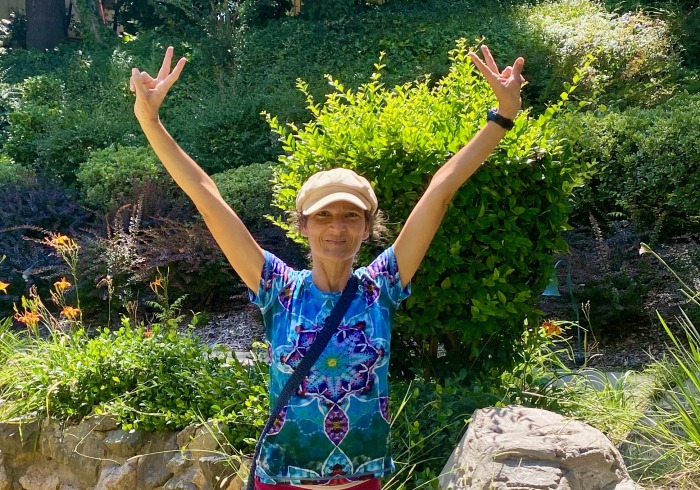
Deike Peters
“Natural Playscapes, Ecological Literacy & Outdoor Education” – A Spring 2022 PBRC Symposium at Soka UniversityFor many of us, the past year of zoom gloom reinforced the insight that excessive time spent indoors, hooked to technology, is related to many modern-day behavioral issues related to attention and mood, especially among children and teens. Yet beyond a simple ‘opting outside,’ what exactly constitutes an optimal outdoor playscape? How much designing do such spaces need? How much is simply about spending time in nature? And what kind of ‘nature’ can families access in today’s urban and suburban environments? The most recent thematic issue of the British journal Built Environment on “Natural Playscapes and Outdoor Education” which I had the pleasure to guest edit, clearly demonstrates that ‘playscapes’ by no means have to feature classic structures such as swings, teeter-totters, or sand boxes. The anarchist social historian Colin Ward once famously proclaimed that “one should be able to play everywhere easily, loosely and not forced into a playground or a park.” My collaborators and I show how natural elements are being incorporated into playgrounds at the same time that virtual and ‘smart’ elements of play are complementing the way children are experiencing the outdoors. We also acknowledge that access to nature has become an important environmental justice issue, as many studies show that higher socioeconomic status is highly correlated with superior access to green spaces. The thematic issue drew its original inspiration from a pre-pandemic winter 2020 Soka Travel Learning Cluster to Sweden and Denmark where my students and I were exposed to the best examples of outdoor education and natural playscapes that Scandinavia has to offer. The follow-up symposium planned at Soka University will be specifically designed to better connect North American scholars and practitioners to this rich European expertise, all the while featuring some cutting-edge initiatives from across California and possible other parts of the US.
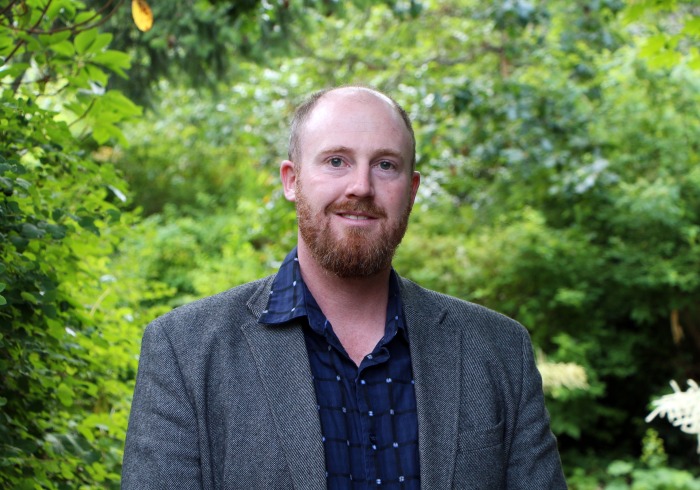
Shane Barter
“Internal Conflicts in Southeast Asia: Ethnicity and Difference” and “Rethinking Territorial Autonomy”As a 2019-20 PBRC faculty fellow, I am excited to complete several research projects. The first is a book manuscript on armed conflicts and peace in Southeast Asia. The book seeks to provide an inventory of civil wars across Southeast Asia, delineate various forms of armed conflict, emphasize how ethnicity shapes violence, and survey varied approaches to peace-building. The second project focuses on territorial autonomy, with the final goal being a new book manuscript. The book seeks to provide a definitive statement of the varied nature of territorial autonomy, in which territorially-concentrated minorities are granted the ability to control sub-national government with special powers. I will develop this project throughout the academic year, including one month as a visiting scholar at Australian National University this fall, again with the support of the PBRC and Soka University of America.
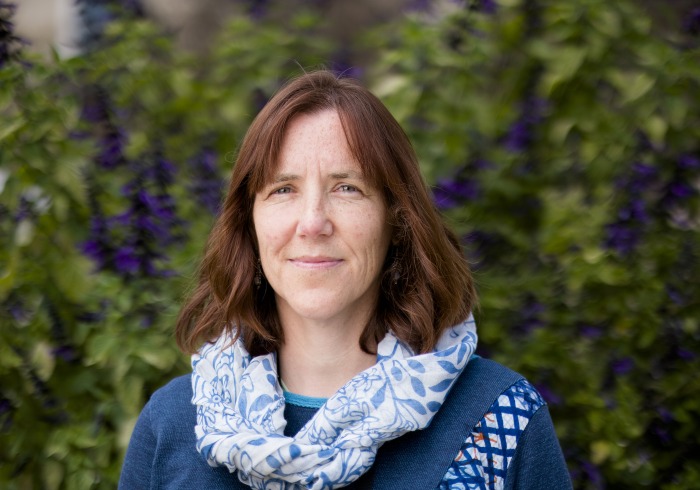
Monika Calef
“Climate Change Impacts on Economic and Social Resilience and Adaptation of People in Alaska and the Yukon”Modeling Vegetation in the Western Arctic Climate change is causing multiple changes in the arctic natural environment such as permafrost thaw, wildfire, and rain-in-winter events which are already causing massive damages to the region’s infrastructure. Arctic residents are forced to adapt to rapid changes in the coupled human-environmental system and have to try to mitigate effects of all three hazards simultaneously, which can be challenging. In collaboration with several other scientists, my project will conduct a spatially explicit assessment of permafrost thaw, wildfire, and rain-in-winter events as they have evolved since 1980 and how they might change until 2060 in the municipality of Anchorage, Alaska; the Fairbanks North Star Borough, Alaska; and Whitehorse, Yukon, Canada. My contribution to this project is the development and verification of annual, 30-meter-resolution vegetation maps for the three study areas from 1980 to 2060 using Geographic Information Systems (GIS), R, statistics, and ancillary datasets on elevation, aspect, slope, climate, soils, and historic fire. These vegetation maps will be used as inputs into a wildfire hazard assessment model, a permafrost model, and economic models to help our partner communities make better-informed decisions regarding how and where to build and manage public and private infrastructure and finance public services.
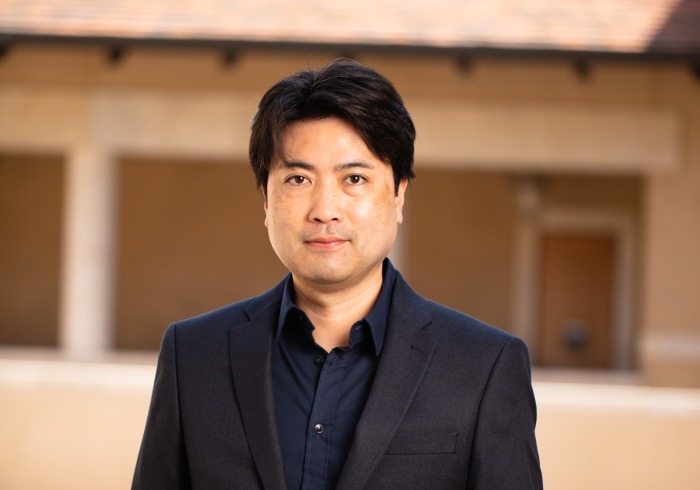
Osamu Ishiyama
“Cross Linguistic Investigation of Historical Sources of First and Second Person Pronouns”With the support from the PBRC fellowship, I am engaged in cross-linguistic research on historical sources of first and second person pronouns. Unlike third person pronouns which tend to come from demonstratives, the origin of first/second person pronouns is under-studied. Though there have been some suggestions regarding the emergence of first/second person pronouns (nouns, spatial deixis, reflexives, plurification, shift in deixis), these proposed conceptual sources need to be examined systematically using more extensive cross-linguistic data.
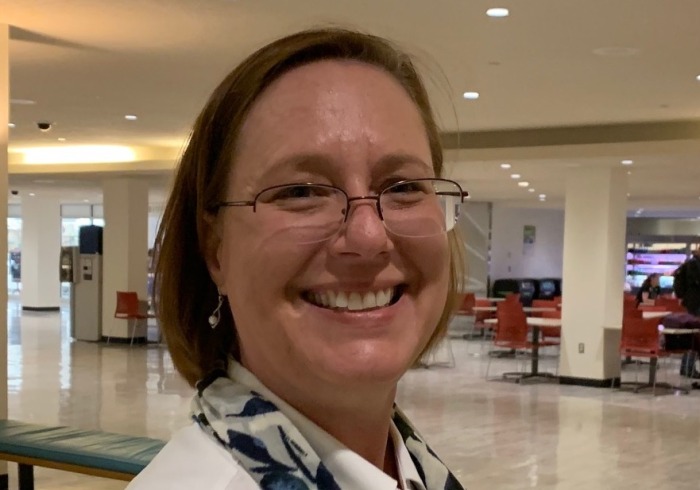
Lisa MacLeod
“UN Security Council Resolution 1325 on Women and Peace and Security”Lisa MacLeod is Associate Professor of International Studies at Soka University of America. Her current research project explores the UN Security Council’s treatment of thematic issues. Traditionally, the UN Security Council has focused on responding to country or region-specific conflicts. In recent years, as much as 30 percent of the Council’s formal agenda has been devoted to thematic issues such as women, peace and security, children and armed conflict, and protection of civilians. Many of these thematic issues reflect an ever-changing security landscape and the post-Cold War adoption of human security norms. Through examining the practices and processes of interactions between a range of state and non-state actors, this study seeks to better understand the UN Security Council’s treatment of thematic issues. Why is it that some themes have dropped off (or never make it to) the council agenda while others have regularly been addressed by the council and increasingly institutionalized in the work of the UN system? The approach of the 20th anniversary of the Resolution 1325 on Women, Peace and Security is an opportune time to explore these questions.
